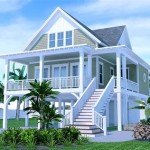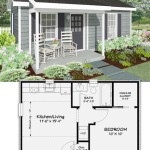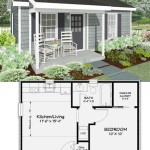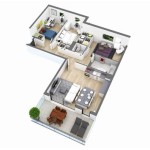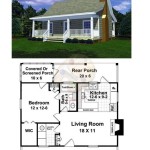Bluebird Bird House Plans: A Comprehensive Guide To Planning And Building
Attracting bluebirds to a backyard can be a rewarding experience, offering the opportunity to observe these vibrant birds up close. One of the most effective methods for attracting bluebirds is providing suitable nesting habitat through the installation of a properly constructed birdhouse. This article delves into the critical aspects of bluebird birdhouse plans, offering a comprehensive guide to planning and building an ideal nesting structure for these beloved birds.
The success of a bluebird birdhouse hinges on adherence to specific design parameters and careful selection of materials. Bluebirds are particular about their nesting spaces, and a poorly designed or constructed house may deter them or, worse, pose a threat to their health and safety. Understanding the bluebird's nesting preferences and potential threats is paramount to creating a successful birdhouse.
This guide will address key considerations, including optimal dimensions, entrance hole size and location, ventilation and drainage, materials, and placement. Furthermore, it will explore methods for deterring predators and competing species, ensuring the safety and security of the nesting bluebirds.
Key Considerations in Bluebird Birdhouse Design
Designing a bluebird birdhouse requires careful attention to detail. Several key features directly impact the attractiveness and suitability of the house for bluebirds. Neglecting these aspects can result in the birdhouse remaining unoccupied or, worse, being used by undesirable species or posing a hazard to the birds.
The size of the birdhouse is a crucial factor. The floor dimensions should be adequate to accommodate the adult birds and their fledglings. A floor space of approximately 5 inches by 5 inches to 6 inches by 6 inches is generally recommended. A smaller space can lead to overcrowding and increased competition among the young birds, while a larger space may be perceived as unsafe or attract larger, more dominant species.
The height of the birdhouse is also important. A depth of 8 to 10 inches from the floor to the bottom of the entrance hole is generally considered optimal. This depth provides sufficient protection from predators and the elements, while also allowing the young birds to easily reach the entrance hole when they are ready to fledge.
The entrance hole diameter is perhaps the most critical aspect of bluebird birdhouse design. A hole that is too small will prevent the bluebirds from entering, while a hole that is too large will allow larger, more aggressive species, such as house sparrows and starlings, to take over the nest box. The recommended entrance hole size for bluebirds is 1 1/2 inches in diameter for Eastern Bluebirds and Mountain Bluebirds. For Western Bluebirds, a 1 9/16 inch entrance hole is sometimes preferred.
The location of the entrance hole is also important. It should be positioned high enough on the box to provide protection from predators, but not so high that the young birds have difficulty reaching it when they are ready to fledge. A position approximately 6 to 8 inches from the floor is generally recommended.
Ventilation and drainage are essential for maintaining a healthy environment inside the birdhouse. Adequate ventilation helps to prevent the buildup of moisture and excessive heat, while drainage holes prevent the accumulation of rainwater. Ventilation can be achieved through small gaps between the roof and the side walls, or through small holes drilled near the top of the side walls. Drainage can be provided by drilling several small holes in the floor of the birdhouse.
Selecting the Right Materials for Longevity and Safety
The choice of materials significantly impacts the durability and safety of the bluebird birdhouse. Certain materials are more suitable than others for withstanding the elements and providing a safe environment for nesting birds. It is important to prioritize natural, untreated materials that will not leach harmful chemicals into the environment.
Wood is the most commonly used material for building birdhouses, and it is generally a good choice. However, it is important to select the right type of wood. Untreated cedar, redwood, or cypress are excellent options due to their natural resistance to rot and insects. These woods are also relatively lightweight and easy to work with.
Pine is another option, but it is more susceptible to rot and insects. If pine is used, it should be untreated and periodically inspected for signs of damage. Pressure-treated wood should be avoided, as it contains chemicals that can be harmful to birds.
Plywood can also be used, but it should be exterior-grade plywood that is designed to withstand moisture. The edges of the plywood should be sealed to prevent water from seeping in and causing the wood to delaminate.
Metal birdhouses are less common, but they can be durable and long-lasting. However, metal can become extremely hot in direct sunlight, which can be harmful to the birds. If a metal birdhouse is used, it should be painted a light color to reflect heat and should be placed in a shaded location.
Plastic birdhouses are also available, but they are generally not recommended. Plastic can also become very hot in direct sunlight, and it does not breathe as well as wood, which can lead to moisture buildup inside the birdhouse. Additionally, some plastics can leach harmful chemicals into the environment.
Regardless of the material chosen, it is important to avoid using any paints, stains, or preservatives that contain lead, mercury, or other harmful chemicals. These chemicals can be toxic to birds and can contaminate the nesting environment.
Placement and Maintenance for Optimal Bluebird Attraction
The location of the bluebird birdhouse is just as important as its design and construction. Placing the birdhouse in a suitable location is essential for attracting bluebirds and ensuring their safety and success. Regular maintenance is also necessary to keep the birdhouse in good condition and to prevent problems such as insect infestations and predator attacks.
Bluebirds prefer open areas with short grasses and scattered trees or shrubs. They use these areas for foraging and perching. The birdhouse should be placed in an area that provides a clear flight path for the birds to enter and exit. Avoid placing the birdhouse in dense woods or near buildings, as these areas may attract other species that compete with bluebirds for nesting sites.
The birdhouse should be mounted on a post or pole, preferably made of metal or wood. The post should be at least 5 feet above the ground to deter predators such as cats and snakes. The birdhouse should be facing away from prevailing winds and direct sunlight. An east-facing orientation is generally recommended, as this provides morning sun and protection from the afternoon heat.
It is important to monitor the birdhouse regularly for signs of nesting activity. If bluebirds are using the birdhouse, avoid disturbing them during the nesting season. However, it is important to check the birdhouse periodically to ensure that it is free from pests and predators.
House sparrows are a major threat to bluebirds. They are aggressive birds that will often take over bluebird nests and kill the young birds. If house sparrows are seen near the birdhouse, they should be removed. This can be done by trapping them or by removing their nests from the birdhouse.
Other potential predators include cats, snakes, raccoons, and squirrels. These predators can be deterred by installing a predator guard on the post or pole. A predator guard is a metal or plastic shield that prevents predators from climbing up the post and reaching the birdhouse.
At the end of the nesting season, the birdhouse should be cleaned out. This will remove any old nesting material and prevent the buildup of parasites and diseases. The birdhouse should be scrubbed with a mild soap and water solution and then thoroughly rinsed. It is important to allow the birdhouse to dry completely before replacing it on the post.
Regular maintenance is essential for ensuring the longevity of the birdhouse. The birdhouse should be inspected annually for signs of damage and repaired as needed. The roof should be checked for leaks, and any loose boards should be reattached. The entrance hole should be checked for cracks or splinters and repaired as necessary.
By following these guidelines, you can create a bluebird birdhouse that will provide a safe and attractive nesting habitat for these beautiful birds. With a little planning and effort, you can enjoy the pleasure of watching bluebirds raise their young in your backyard for many years to come.
Furthermore, consider the use of "nest box trails," which involve placing multiple bluebird houses in a coordinated manner across a suitable habitat. This approach can increase the likelihood of attracting bluebirds and promoting their population in a given area. The spacing between houses within a nest box trail is crucial; generally, placing houses 100-150 yards apart can minimize competition between bluebird pairs.
In addition to controlling house sparrows, it is important to manage other invasive species that may compete with bluebirds for nesting sites. European starlings, for instance, are cavity nesters that can aggressively displace bluebirds. While controlling starlings can be challenging, strategies such as using entrance hole restrictors that are too small for starlings but large enough for bluebirds can be effective.
Bluebird populations have faced significant challenges due to habitat loss and competition with non-native species. By providing suitable nesting habitat and implementing effective management practices, individuals can play a vital role in supporting bluebird conservation efforts.

Birdhouse And Nest Box Plans For Several Bird Species The Birders Report

Birdhouse And Nest Box Plans For Several Bird Species The Birders Report

Creating Bluebird Habitat Free House Plans
How To Build Your Birdhouses

Birdhouse Plans Index

Bluebird House Building Plans Instructions Blueprint How To Build Birdhouse

Bluebird House Building Plans Instructions Blueprint How To Build Birdhouse

Easy To Build Birdhouses By Mary Twitc Hachette Book Group

7 Bluebird House Ideas Bird Plans

Birdhouse And Nest Box Plans For Several Bird Species The Birders Report
Related Posts

